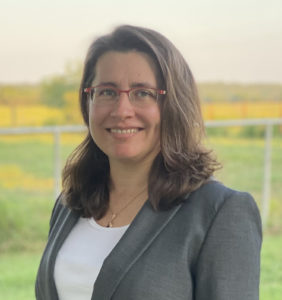
Assistant Professor of Finance
Texas Christian University
v.traweek@tcu.edu
Interests: financial intermediation, household finance, corporate finance
Publications:
Traweek, Virginia, and Malcolm Wardlaw. “Freedman’s Savings and Trust Bank Passbook and Dividend Repayment Records.” Journal of Slavery and Data Preservation 3, no. 1 (2022). https://doi.org/10.25971/7jn5-5×58.
Traweek, Virginia, and Malcolm Wardlaw. “Racial violence, political representation, and the threat to banks as open access institutions.” Journal of Banking and Finance, Volume 172, March 2025, 107382. https://www.sciencedirect.com/science/article/abs/pii/S0378426625000032.
Virginia Traweek, Malcolm Wardlaw, “Societal Inequality and Bank Deposit Dynamics: Evidence from the Freedman’s Savings Bank,” The Review of Financial Studies, 2025; hhaf065, https://doi.org/10.1093/rfs/hhaf065
Media Coverage:
Michigan Ross Faculty News, November 2021
Conversations with Kenyatta, November 2021
Working Papers:
“A Tale of Two Cities: The Rural-Urban Divide in Banking”
Bank branches in counties with a high rural population offer certificate of deposit (CD) rates of up to 22% higher than banks in counties that are more urban. Although bank size does explain some of this result, controlling for large bank results in a 5.6% to 8% rural CD premium. I show that higher CD rates in rural counties are not a function of credit quality of rural borrowers and are not explained by rural CD depositor impatience or rural bank capital constraints. Overall, my findings highlight an important difference in the way rural and urban depositors interact with the financial system.
“Shadows on Main Street: Local Financial Architecture and Asset Reallocation” (coauthored with Amiyatosh Purnanandam and Taylor Begley)
We examine how shadow banks shape the reallocation of real assets at a local level. We first construct a novel county-level panel dataset of all financial institutions—not just banks—from Yellow Pages in Indiana, Michigan, and Ohio from 1920–2000. We document that shadow banks constitute a significant and persistent component of local financial architecture, representing over one-third of financial firms. Using changes in global corn prices as an exogenous shock to the economics of farming, we find that a higher shadow bank share in the local economy significantly enhances asset reallocation in response to economic shocks. In these counties, higher corn prices lead to greater farm consolidation, more efficient use of physical capital, and a larger increase in land values. The benefits come at the expense of higher volatility in land prices in these counties, consistent with an efficiency-volatility trade off. Our paper provides the first granular, long-run evidence that shadow banks play a key complementary role in facilitating asset reallocation.